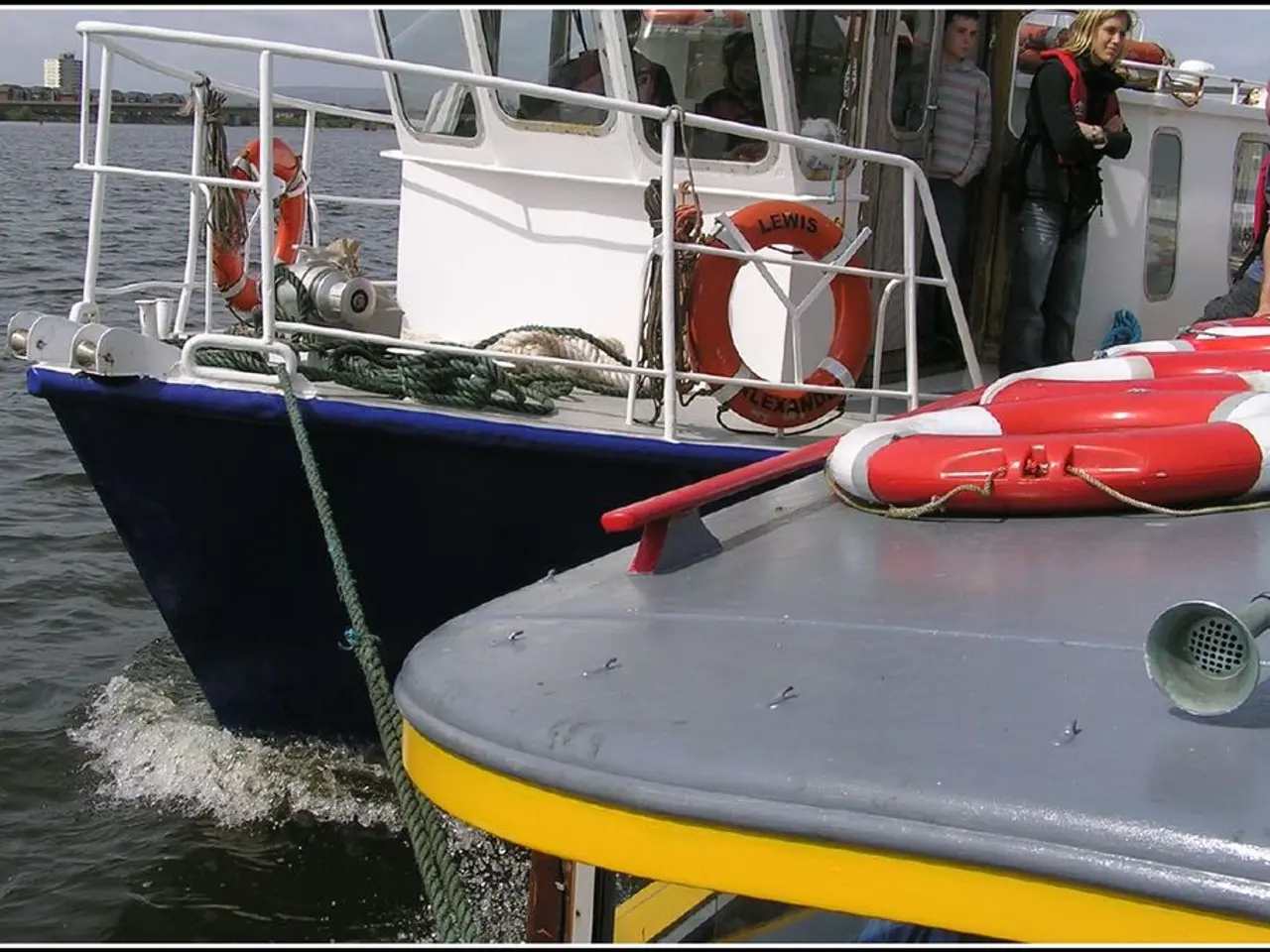Engineering venture: Crafting watercraft from straws for a STEM competition
The Straw Boat Challenge, a captivating STEM activity, invites children aged K-5 to unleash their creativity while learning essential concepts such as buoyancy, displacement, stability, and weight distribution. This engaging activity, inspired by the principles discovered by the ancient Greek scientist Archimedes, offers a fun and educational experience for young minds.
## Designing a Winning Straw Boat
To create a straw boat that floats and holds the maximum weight, consider these practical tips and strategies.
### Key Design Tips
1. **Select Lightweight and Sturdy Materials** - Utilize straws and tape or aluminum foil for the hull, as they are lightweight and easy to shape. - Straws provide structure, while foil can be shaped to form a waterproof base.
2. **Maximize Base Area** - Broader bases distribute weight more evenly and increase stability. - Designing a wide, flat-bottomed hull enhances buoyancy, allowing the boat to hold more weight before water spills over the sides.
3. **Seal All Joints and Seams** - Use plenty of tape to prevent water from leaking between straws or foil layers. - For foil boats, fold the edges upward to create a wall that prevents water from entering.
4. **Minimize Weight of the Boat Itself** - Use the minimum amount of material needed for structure and water resistance. - Avoid unnecessary decorations or extra material that will take up space or add weight.
5. **Distribute Weight Evenly** - Place weights (like marbles or coins) carefully in the center of the boat to maintain balance. - Uneven weight can cause the boat to tip over and sink prematurely.
6. **Test and Iterate** - Try different shapes (like rectangular, pontoon, or catamaran styles) to see which holds the most weight. - If your boat fails, analyze why—did water leak in, or did it tip over?—and revise your design. - The engineering process is iterative: test, observe, and improve your prototype.
### Additional Ideas
- **Catamaran or Pontoon Designs:** Building two hulls side by side (like a catamaran) can further increase stability and weight capacity. - **Use of Marbles or Coins:** Test your boat with marbles or coins to see how much weight it can hold before sinking. - **Incorporate Straws as Outriggers:** Attaching straws as outriggers can help balance the boat and prevent water from entering.
By following these tips and embracing a mindset of continuous improvement, you’ll be well on your way to designing a successful straw boat for your STEM challenge.
## Putting Your Straw Boat to the Test
After building the boat, it is tested by filling it with items and observing whether it sinks or floats. A boat will usually sink if it weighs more or is more dense than water. The challenge aims to encourage participants to build a straw boat that can float and hold the most weight possible.
The Straw Boat Challenge, with its emphasis on displacement, weight distribution, and stability, offers an engaging and educational experience for young learners. Joining the Library Club Membership provides access to a complete library of art and STEM printables, offering even more opportunities for exploration and growth. So, gather your materials, let your creativity flow, and dive into the world of engineering and buoyancy!
- Engaging in the Straw Boat Challenge, where children aged K-5 design their own boats, offers a fun and educational experience, combining elements of physics, engineering, and art.
- By mastering the concepts of buoyancy, displacement, stability, and weight distribution through this activity, kids can deepen their understanding of STEM principles.
- Creating a winning straw boat involves selecting lightweight and sturdy materials, such as straws and tape or aluminum foil, for the hull.
- A broader base area offers better stability, ensuring the boat can hold more weight without tipping over.
- To prevent water from leaking, seal all joints and seams with an abundant amount of tape, and fold the edges of foil boats upward to create a wall.
- Minimizing the weight of the boat itself by using the minimum amount of material needed is essential for maximum weight capacity.
- Placing weights evenly in the center of the boat ensures balance and prevents early sinking.
- Try different shapes, such as rectangular, pontoon, or catamaran styles, to identify the design that holds the most weight.
- The engineering process is iterative; test, observe, and improve your prototype until you create a successful boat.
- Additional strategies, like building catamaran or pontoon designs, using marbles or coins, and incorporating straws as outriggers, can further enhance the boat's stability and weight capacity.
- Embracing a mindset of continuous improvement is the key to designing a successful straw boat for the STEM challenge.
- Testing the boat after construction reveals its performance, with a boat usually sinking when it weighs more or is denser than water.
- The Straw Boat Challenge, aiming to encourage participants to build boats that float and hold the most weight, promotes STEM education, personal growth, and lifelong learning.
- Joining a Library Club Membership offers access to a vast library of art and STEM printables, providing more opportunities for exploration, learning, and skills training in various areas, including sports analysis, productivity, career development, online education, job search, goal-setting, mindfulness, and sports.




